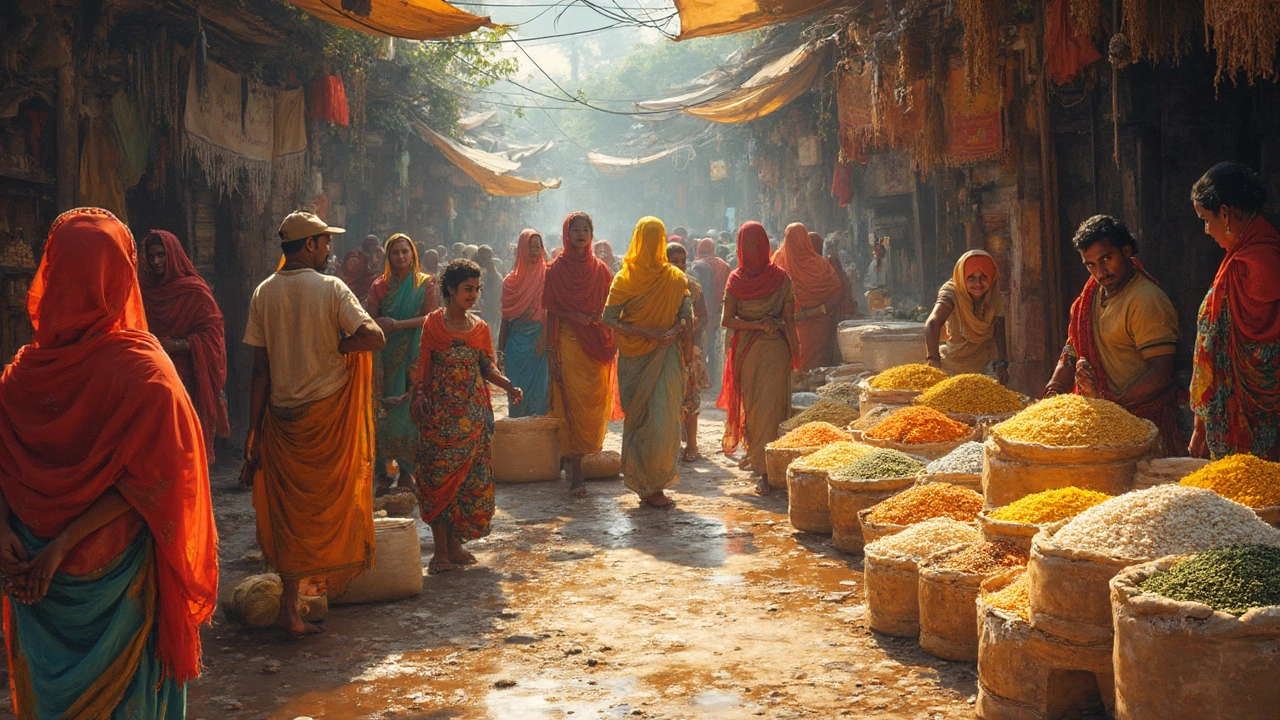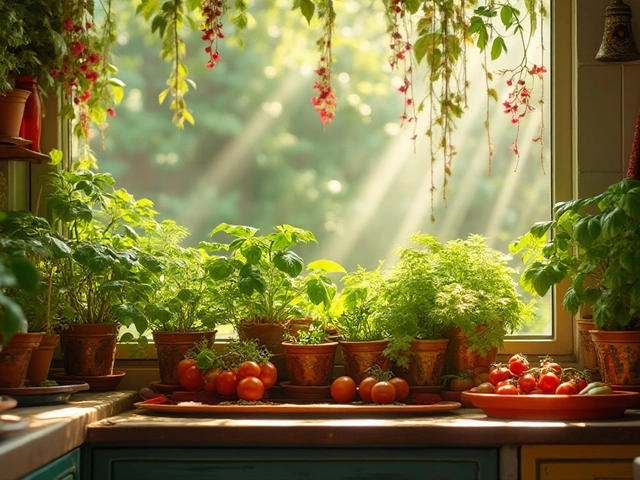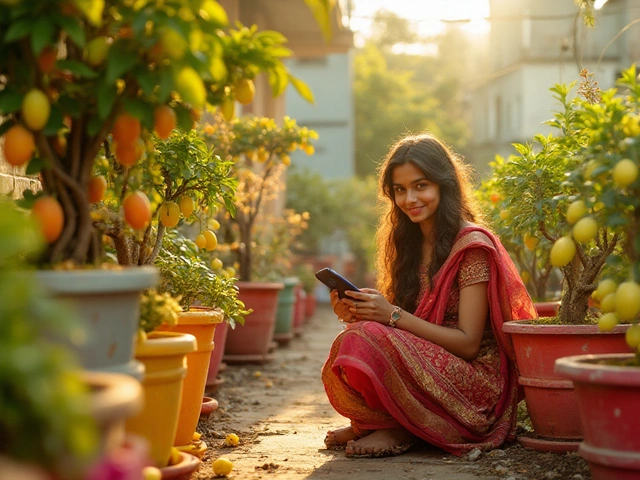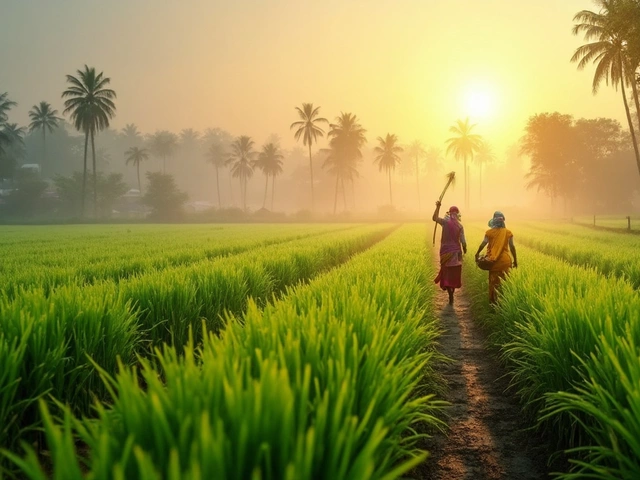Ever stopped to wonder, who eats the most rice in the world? It turns out, while many cultures include rice in their meals, Asian countries take the top spot in rice consumption. In these regions, rice isn't just food; it's a way of life. Items like sushi in Japan, biryani in India, or congee in China are daily staples, making rice integral to their diets.
For much of Asia, rice is more than just a side dish. It's often served three times a day and is the highlight of any meal. Want to know what happens when a food becomes this important to a culture? Whole festivals and traditions start revolving around it. Fascinating, right?
- Introduction to Global Rice Consumption
- Cultural Significance of Rice
- Regions with Highest Rice Intake
- Importance of Rice in Daily Diets
- Tips for Sustainable Rice Consumption
Introduction to Global Rice Consumption
Imagine a world without rice. Hard to picture, right? This humble grain feeds more than half of the world’s population every single day. With rice consumption stretching across continents, it’s safe to say rice isn't just a food; it's a global phenomenon.
To put things into perspective, over 90% of the world’s rice consumption takes place in Asia. Countries like China, India, and Indonesia are at the forefront, consuming staggering amounts. Asia alone is responsible for roughly 515 million metric tons of rice per year.
Why Rice is So Popular
So, why is rice such a big deal? For starters, it’s incredibly versatile. Whether you're frying, steaming, or boiling, rice adapts beautifully, lending itself to countless dishes. Plus, it’s pretty easy to grow in the hot and humid climates prevalent in many of these countries, making it accessible and affordable.
The Global Impact
Rice isn’t just a staple in Asia. It's making waves in Africa and Latin America too, where it’s increasingly becoming a crucial part of the diet. In Africa, for instance, you’ll find dishes like jollof rice or nasi goreng, showcasing just how globally intertwined our eating habits are becoming.
| Region | Annual Rice Consumption (Tonnes) |
|---|---|
| Asia | 515 million |
| Africa | 32 million |
| America | 27 million |
This table shows how enormous the demand is across different regions. As global populations grow, so does the demand for this ancient grain, making it more important than ever to understand rice habits and cultivation methods.
Cultural Significance of Rice
Why is rice such a big deal in some cultures? Well, in many parts of Asia, rice has been a staple for centuries, shaping traditions and even languages. It's not just food, it's a symbol of life, prosperity, and community. In countries like Japan, the word for cooked rice, ‘gohan,’ also means ‘meal,’ highlighting its importance in each dish.
Rice in Religious Rituals and Festivals
Across the world, rice plays a crucial role in religious rituals and festivals. In Hindu weddings, for instance, rice features prominently during ceremonies, symbolizing prosperity. Similarly, in China, the harvest festival is marked by offerings of rice to ancestors, reflecting its significance.
Social and Economic Impact
Economically, rice cultivation has been the backbone of several Asian economies. The grain not only provides sustenance but also employment for millions. When you consider the regions with the highest rice consumption, you see how interconnected farming and culture are. Families passing fields down generations, and entire communities depending on rice for their livelihood, show it's more than just agriculture; it’s a way of life.
Global Influence
Although primarily associated with Asia, rice impacts global cuisine too. You find it on menus everywhere, from Spanish paellas to Italian risottos. This international presence is a testament to the ongoing influence of traditional rice habits.
Understanding the cultural significance of rice helps us appreciate its pivotal role in shaping societies. So next time you scoop up a plate of rice, remember, you're not just eating food; you're partaking in a tradition that’s fed civilizations for thousands of years.
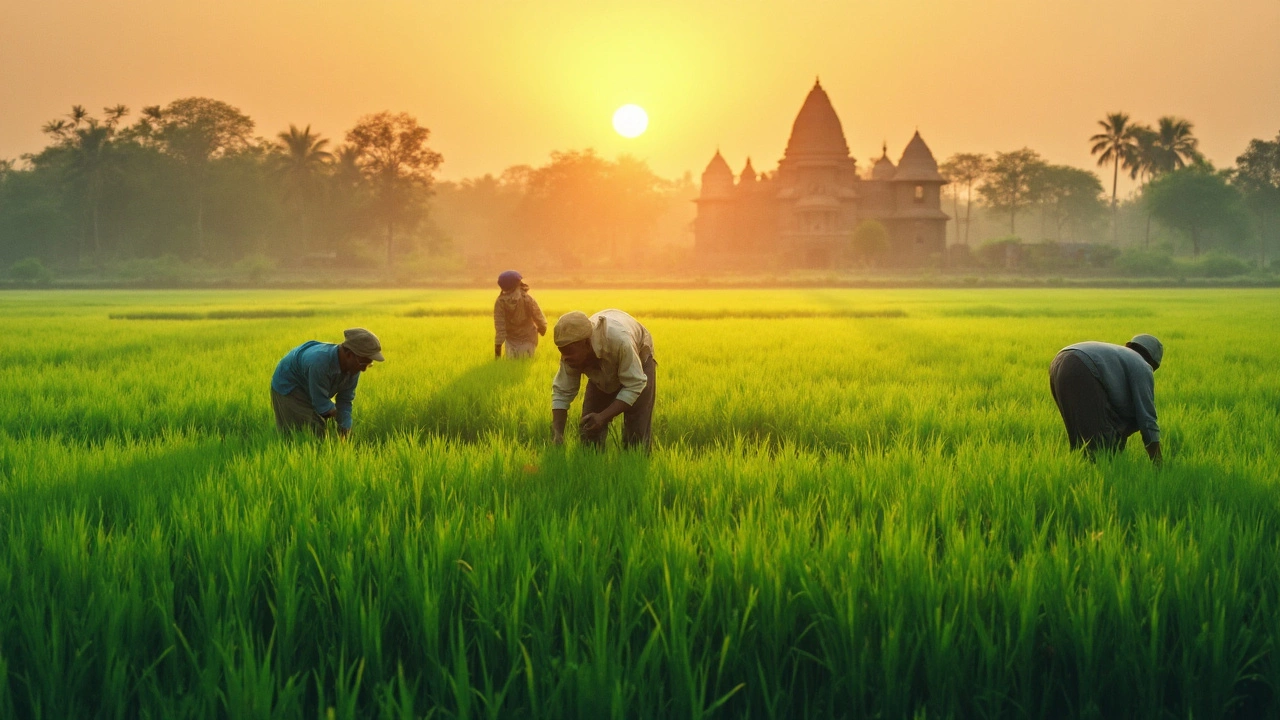
Regions with Highest Rice Intake
If you're looking at where people eat rice like it's going out of style, look no further than Asia. This continent truly takes the cake—or should I say the rice cake—when it comes to rice consumption. Countries like China, India, and Indonesia are the big players here. Rice serves as a staple food for billions, and it's hard to imagine a meal without it.
Asia's Love Affair with Rice
Starting with China, it's one of the world's leading rice consumers. A typical Chinese meal often includes rice, usually boiled or steamed. Rice is not just food—it's an essential part of the culture, appearing in everything from spectacular festivals to comforting home meals.
India is another giant in the rice world. From north to south, you'll find a dazzling variety of rice-based dishes. India not only loves consuming rice but is also one of the largest producers of the grain. It's a fundamental ingredient in diverse recipes like biryanis, risottos, and idlis.
Beyond Asia: Africa and Beyond
While Asia might be the MVP in terms of rice consumption, other regions are catching up. In Africa, for instance, countries like Nigeria have seen sharp increases in rice consumption due to urbanization and changing eating habits. Jollof rice is a popular dish that showcases rice's importance in West African cuisine.
South America's no slouch either. Brazil, in particular, loves its feijão com arroz (beans and rice), which is enjoyed by people across the country. It’s evidence that even continents miles apart are united under the banner of rice-loving communities.
If you're curious to see how all this consumption stacks up, here's a simple breakdown:
| Country | Consumption (kg per year) |
|---|---|
| China | 144 |
| India | 102 |
| Indonesia | 139 |
Pretty wild, huh? The numbers tell a story of their own, showing how integral rice consumption is for these regions. Rice isn't just a meal option; it's a dietary staple and a cultural cornerstone.
Importance of Rice in Daily Diets
Rice plays a crucial role in daily meals, especially in Asian countries, where it often holds center stage at every mealtime. It's not just about filling stomachs; rice provides essential energy and nutrition that fuels millions of people daily. Let's dive into why this humble grain matters so much.
Nutrition and Energy Source
One of the most significant benefits of rice is its energy supply, coming primarily from carbohydrates. For many folks counting on rice every day, especially those in regions like Southeast Asia, it's a vital part of their diet because it helps sustain energy levels throughout the day. Did you know that in countries like Myanmar and Vietnam, rice can account for as much as 75% of daily calorie intake?
Rich in Nutrients
Though white rice is widespread, many people are turning to brown and red rice for their additional health benefits. Brown rice, for instance, retains its bran and germ layers, offering more fiber, and nutrients per bite. It's an easy swap that can boost overall health. Plus, rice is naturally gluten-free, making it a staple for those with gluten intolerance.
Cultural Connection
Beyond nutrition, rice also supports social and cultural structures, fostering a sense of community around meals. School lunches in Japan, for example, often include rice-based dishes as part of a balanced diet, teaching children early about healthy eating habits connected to their culture.
Sustainable and Versatile
Economically, rice cultivation supports millions of farmers around the world. It's a resilient crop that can thrive in various environments, from highlands to lowlands, making it a sustainable choice. Not to mention its versatility in cooking, providing a base for countless recipes and flavors worldwide. Whether it's a spicy curry, savory stir-fry, or sweet dessert, rice adapts to them all.
| Country | Rice as % of Caloric Intake |
|---|---|
| Bangladesh | 70% |
| India | 63% |
| Indonesia | 61% |
| Myanmar | 75% |
| Vietnam | 70% |
It's clear that rice's role extends beyond just being food; it's a cornerstone in many cultures, deeply woven into the dietary habits and lifestyle of people around the globe.
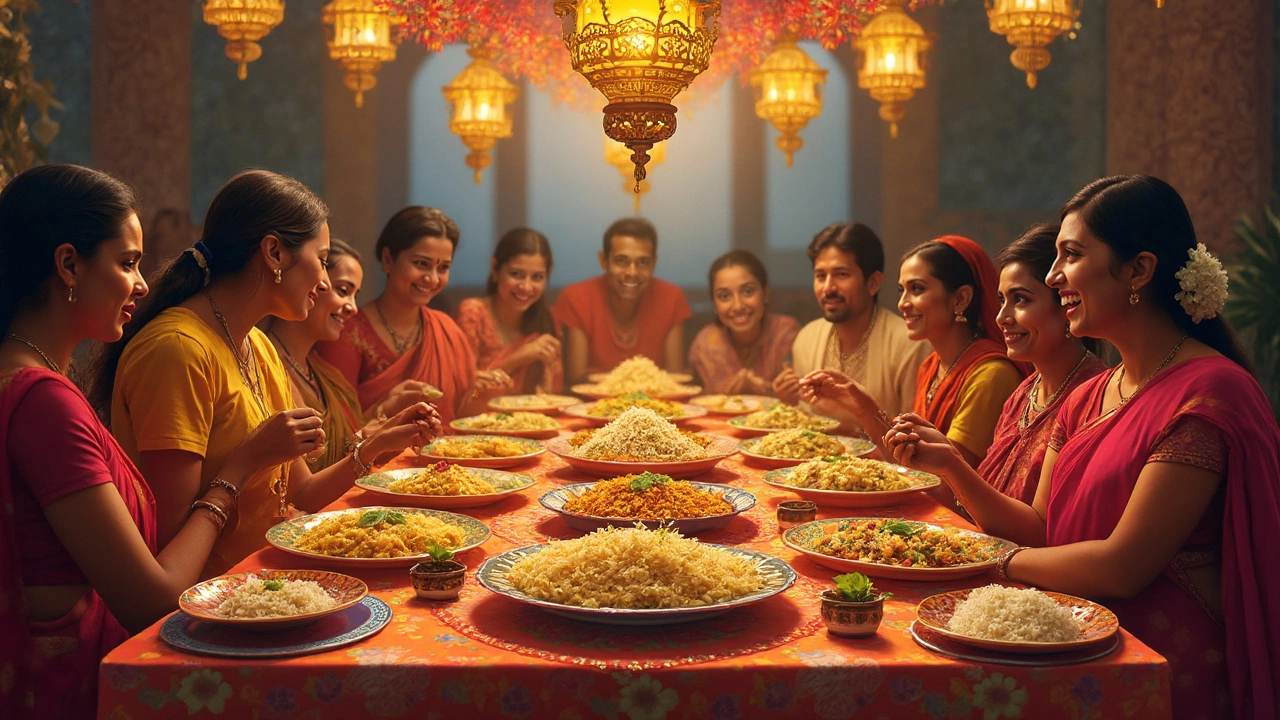
Tips for Sustainable Rice Consumption
Eating rice sustainably has become more important as global demand grows. How can we do that? Let’s run through some simple steps.
Opt for Eco-Friendly Rice Varieties
First up, try choosing rice types known for better environmental impacts. Varieties like brown or black rice aren't just nutritious—they often require less water than white rice during cultivation, making them a more eco-friendly option.
Support Local Farmers
If you have the chance, buy from local farmers or communities that follow sustainable practices. Supporting them not only boosts the local economy but also encourages them to use sustainable techniques, which can be better for the environment.
Reduce Waste with Proper Portioning
Cooking too much rice? It's time to portion wisely. Making just enough rice reduces waste and ensures every grain counts. Freeze any extra portions for later use; it keeps them fresh and ready for another meal.
Re-use Leftover Rice Creatively
Leftovers don't have to be boring. Spice up your next meal by turning last night's rice into a new dish. Fried rice, rice pudding, or even rice cakes make for quick, delicious ways to use up what you might otherwise throw away.
Embrace Water-Saving Cooking Methods
When cooking rice, try to use methods that conserve water. Steaming rice uses less water compared to boiling. Plus, it retains more nutrients, giving you more value for every spoonful.
Be Aware of Your Carbon Footprint
Finally, being mindful of the carbon footprint related to rice cultivation can help foster sustainability. By choosing brands and varieties that focus on minimizing emissions, we can make a difference right from our dinner table.
| Rice Type | Water Consumption Indicator | Eco-Impact |
|---|---|---|
| Brown Rice | Low | Eco-friendly |
| White Rice | High | Less Eco-friendly |
| Black Rice | Moderate | Eco-friendly |
These tips are straightforward but can have a big impact when adopted widely. By making small changes in our rice consumption habits, we can contribute to a more sustainable planet, one grain at a time.
